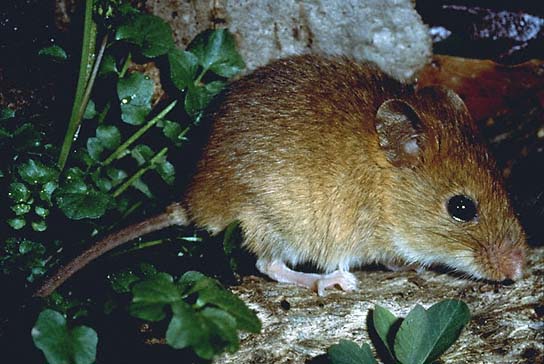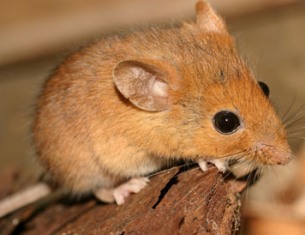Golden Mouse: (Ochrotomys nuttalli)
The golden mouse (ochrotomys nuttalli) is a member of the cricetidae family. They average between 2 to 4.5 inches long and their tails are between 1 to 4 inches long, weighing between 1 to 2 ounces.
The golden mouse has soft and thick fur covering the upper body. Its paws and under – parts are white and their tails are cream in color. Their color pattern do vary depending on the region they are in, for example the golden mice in the peninsula are a rich yellowish – brown color. gray or light brown. Their eyes are round and black in color, the ears are long and very lightly furred, almost appearing bare.Golden mice are found throughout the southern United States, ranging from northern Kentucky to Central Florida and eastern Texas to the Atlantic Ocean. They mainly inhibit climates that have hot and wet summers and dry winters, in areas that are filled with thick woodlands, swamps, among vines, dense vegetation and in small trees or shrubs, although they prefer to inhibit areas that honey suckle, green brier and red cedar grow.
The golden mouse is an granivorous, meaning they mainly consume seeds. Their primary diet consists of seeds, grains, plants, nuts and sumac seeds.
Golden mice are mainly nocturnal and arboreal meaning they live in trees, however they live on the ground as well. They move fast and easily. Golden mice are able to use their prehensile tails to balance themselves while climbing trees, they can even hang from tree branches using their tails. They are known as gregarious creatures, as its been discovered that eight mice were sharing one nest, making them social and not entirely solitary. These groups usually consist of the mother and her young, but can consist of unrelated mice. They communicate through scents and tactile (movements). Golden mice mainly nest, in trees or on the ground, which the nests consist of leaf debris and binder logs. Having the nest on the ground can be good or a bad thing, because of wet soils or floods it forces them to relocate their nests to trees. If the ground nest remains undisturbed it lowers its risk for being seen by a predator, because the nest is very well hidden. The golden mouse is more likely to escape its predator while nesting on the ground. The golden mouse breeds throughout the year depending on the region and environment it is in. In Florida they breed between September to spring. Females can produce 12 litters a year, having 1 to 4 young, averaging 2 to 3 young. Their gestational period is approximately 30 days. When the young are born all the adults leave the nest except for the mother.
The golden mouse is known to carry several diseases such as tularemia, leptospirosis and salmonellosis, which can be transmitted to humans.

